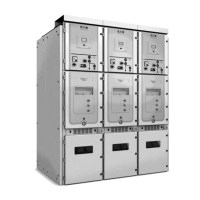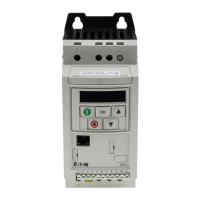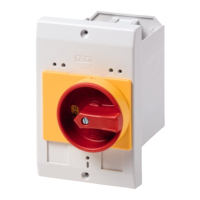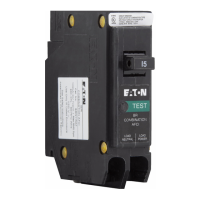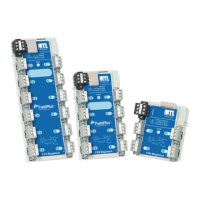11
3 Protection setting description
PXR TRIP UNITS FOR POWER DEFENSE MOLDED CASE CIRCUIT BREAKERS MN012007EN June 2018 www.eaton.com
3.4.3 Ground fault thermal memory
In addition to standard ground fault protection, the PXR trip unit also has a ground fault
memory. This protects load circuits from the effects of intermittent ground faults over a
short period of time. Ground fault memory is enabled from the factory but can be reconfig-
ured using the UI or by using PXPM software.
Consider an example where there is “sputtering” ground fault. With ground fault memory,
the trip unit “remembers” the sputtering ground current. When the ground current returns
to normal, below pickup, the memory will begin to reset (after about ten minutes it will have
reset fully). The next ground trip time will again correspond to the curve. Without this func-
tion enabled, ground fault protection memory resets each time the arc goes out, so that a
sputtering fault may not trip the circuit breaker.
3.4.4 Ground fault relay
If the ground fault alarm option is selected, a red ground alarm indicator will illuminate to
show the presence of ground current in excess of the ground alarm setting. The optional
relays in the trip unit can be configured to energize an alarm relay upon this condition. The
indicator and relay will reset automatically when the ground current reduces to a value less
than the ground fault pickup setting.
If the ground fault trip option is selected, the trip unit can indicate when the circuit breaker
has tripped on a ground fault. You must then push the “RESET” button in order to reset the
relay contact.
3.4.5 Ground fault sensing
The PXR 20/25 trip unit provides for three modes of sensing to detect ground fault currents:
residual, source ground, and zero sequence. The mode is selected using the UI or by using
the configuration software.
See Section 3.5: Special consideration for ground fault test for guidance when testing
ground fault functionality.
Residual current sensing
Residual sensing is the standard mode of ground fault sensing in PXR based circuit break-
ers. This mode uses one current sensor on each phase conductor and one on the neutral
for a four-wire system. If the system neutral is grounded, but phase to neutral loads are not
used, the PXR trip unit includes all of the components necessary for ground fault protection.
This mode of sensing sums the outputs of the three or four individual current sensors. If
the sum is zero, then no ground fault exists. Residual ground fault sensing features are
adaptable to main and feeder circuit breaker applications. If an external neutral sensor is
used with reverse feed breaker applications, the proper polarity of the neutral needs to be
considered.
Source ground / zero sequence sensing
These two methods are only available on Power Defense frames five and six. The source
ground return method is usually applied when ground fault protection is desired only on
the main circuit breaker in a simple radial system. This method is also applicable to double-
ended systems where a mid-point grounding electrode is employed.
For this mode of sensing, a single current sensor mounted on the equipment-bonding
jumper will directly measure the total ground current flowing in the grounding electrode
conductor. Setting the ground fault type will enable this protection.
Zero sequence sensing also referred to as vectoral summation, available in certain styles, is
applicable to mains, feeders, and special schemes involving zone protection.
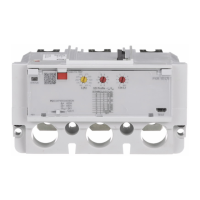
